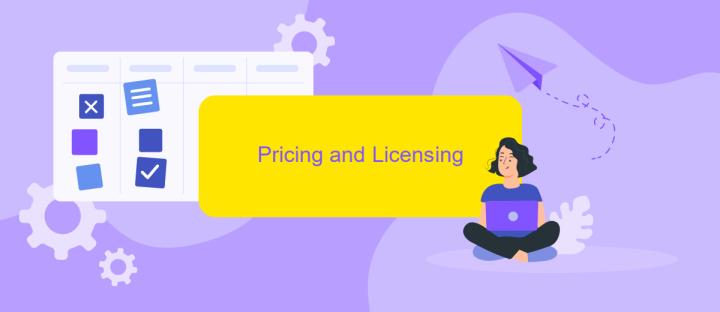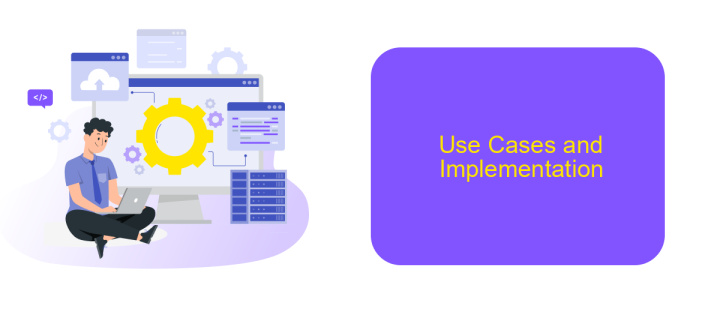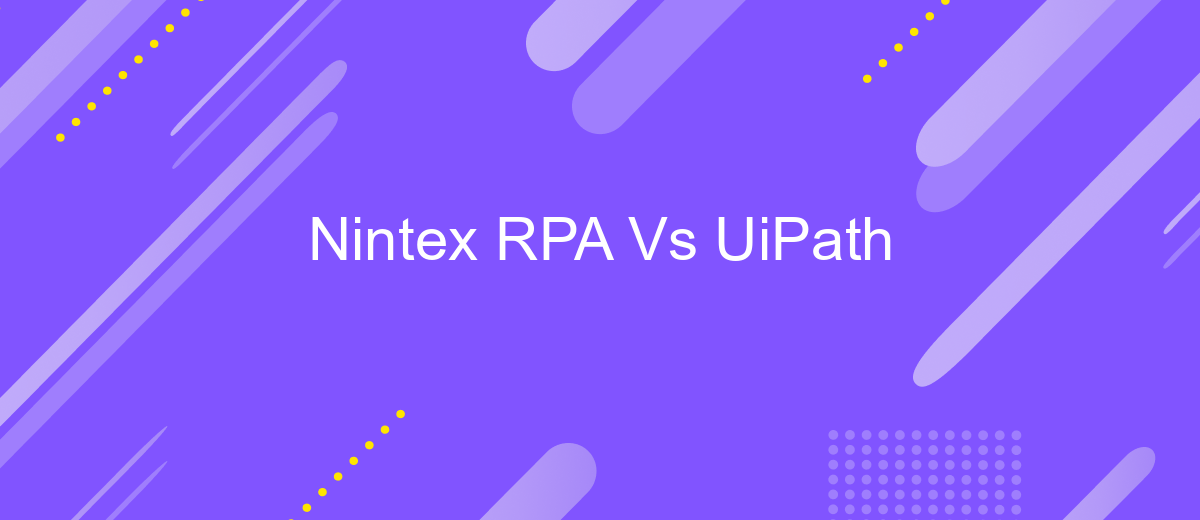Nintex RPA Vs UiPath
In the rapidly evolving world of robotic process automation (RPA), choosing the right platform can significantly impact your business efficiency. This article delves into a comparative analysis of two leading RPA tools: Nintex RPA and UiPath. By examining their features, capabilities, and user experiences, we aim to provide valuable insights to help you make an informed decision.
Introduction
In the rapidly evolving world of Robotic Process Automation (RPA), businesses are constantly seeking efficient solutions to streamline their operations. Two prominent players in this field are Nintex RPA and UiPath, both offering distinct features and capabilities to automate repetitive tasks and enhance productivity.
- Nintex RPA: Known for its user-friendly interface and seamless integration with other Nintex products, making it ideal for businesses already using the Nintex suite.
- UiPath: Renowned for its robust platform, extensive community support, and powerful capabilities, making it a preferred choice for enterprises seeking comprehensive automation solutions.
Choosing between Nintex RPA and UiPath depends on various factors, including the specific needs of your organization, existing technology stack, and budget constraints. Additionally, integrating these RPA tools with other systems can be facilitated by services like ApiX-Drive, which helps streamline data flow and enhance overall efficiency. Understanding the strengths and limitations of each platform is crucial for making an informed decision.
Features and Functionality

Nintex RPA and UiPath both offer robust features and functionality tailored to streamline business processes through automation. Nintex RPA stands out with its easy-to-use drag-and-drop interface, allowing users to automate tasks without extensive coding knowledge. It also offers seamless integration with various third-party applications and services, enhancing its flexibility. On the other hand, UiPath provides a more comprehensive suite of tools, including advanced AI capabilities and machine learning models, which can handle more complex automation tasks. UiPath's platform is known for its extensive library of pre-built automation components and strong community support.
When it comes to integration settings, both platforms offer versatile options, but UiPath has a slight edge due to its extensive API capabilities. For businesses looking to streamline integration processes, services like ApiX-Drive can be invaluable. ApiX-Drive simplifies the integration of various applications, ensuring smooth data flow between systems. This can enhance the functionality of both Nintex RPA and UiPath by enabling more efficient data handling and process automation. Ultimately, the choice between Nintex RPA and UiPath will depend on the specific needs and technical expertise of the organization.
Pricing and Licensing

When it comes to pricing and licensing, both Nintex RPA and UiPath offer flexible options tailored to different business needs. Nintex RPA typically provides a subscription-based model, allowing businesses to scale their automation efforts as needed. UiPath, on the other hand, offers a more varied pricing structure, including both subscription and perpetual licensing options.
- Nintex RPA: Subscription-based, scalable pricing.
- UiPath: Subscription and perpetual licensing options.
Choosing between these two platforms often depends on your specific requirements and budget. For businesses looking to integrate various services seamlessly, tools like ApiX-Drive can be invaluable. ApiX-Drive simplifies the integration process, making it easier to connect Nintex RPA or UiPath with other systems, ensuring smooth and efficient workflows.
Use Cases and Implementation

When considering the use cases and implementation of Nintex RPA and UiPath, it is essential to understand their capabilities in automating various business processes. Nintex RPA is particularly effective for organizations looking to streamline document management, data entry, and repetitive tasks. UiPath, on the other hand, excels in more complex automation scenarios, such as end-to-end process automation and advanced data analytics.
Both platforms offer robust integration options to ensure seamless workflow automation. For instance, ApiX-Drive can be utilized to facilitate integrations with various third-party applications, enhancing the automation capabilities of both Nintex RPA and UiPath. This service allows for easy setup and management of integrations, ensuring that data flows smoothly between different systems.
- Nintex RPA: Ideal for document management, data entry, and repetitive tasks.
- UiPath: Suitable for complex automation, end-to-end processes, and advanced analytics.
- ApiX-Drive: Facilitates integrations with third-party applications for both platforms.
Ultimately, the choice between Nintex RPA and UiPath depends on the specific needs and complexity of the business processes you aim to automate. By leveraging integration services like ApiX-Drive, organizations can maximize the efficiency and effectiveness of their automation initiatives.
Comparison and Conclusion
When comparing Nintex RPA and UiPath, several key differences emerge. Nintex RPA is known for its user-friendly interface and seamless integration with Microsoft products, making it a popular choice for organizations heavily invested in the Microsoft ecosystem. On the other hand, UiPath offers a more robust set of features, including advanced AI and machine learning capabilities, which are ideal for businesses looking for comprehensive automation solutions. Both platforms provide extensive documentation and community support, but UiPath’s larger user base often results in faster troubleshooting and more community-driven enhancements.
In terms of integration, both platforms offer various options, but UiPath stands out with its extensive range of pre-built integrations and connectors. For organizations looking to streamline integrations further, services like ApiX-Drive can be highly beneficial. ApiX-Drive simplifies the process of connecting different software applications, enhancing the overall efficiency of both Nintex RPA and UiPath implementations. In conclusion, the choice between Nintex RPA and UiPath largely depends on an organization's specific needs and existing technology stack. UiPath may be more suitable for complex, large-scale automation projects, whereas Nintex RPA is ideal for businesses seeking straightforward, Microsoft-aligned solutions.
- Automate the work of an online store or landing
- Empower through integration
- Don't spend money on programmers and integrators
- Save time by automating routine tasks
FAQ
What are the main differences between Nintex RPA and UiPath?
Which tool is more cost-effective for small businesses?
How do both tools handle integration with other software?
Can I use these tools without extensive programming knowledge?
What support options are available for implementing these RPA solutions?
Apix-Drive is a universal tool that will quickly streamline any workflow, freeing you from routine and possible financial losses. Try ApiX-Drive in action and see how useful it is for you personally. In the meantime, when you are setting up connections between systems, think about where you are investing your free time, because now you will have much more of it.


